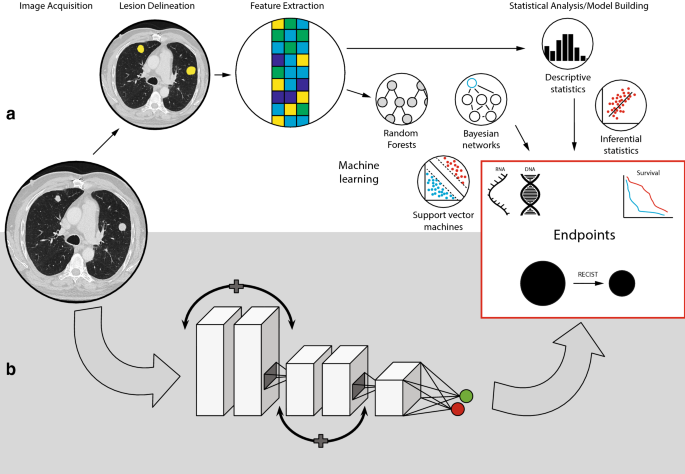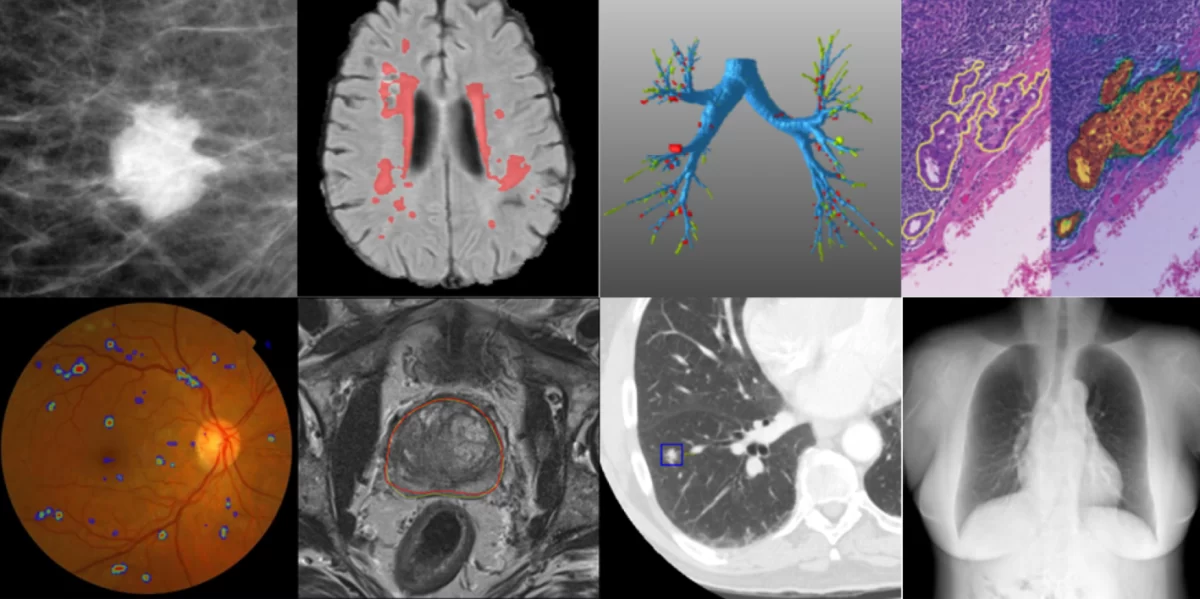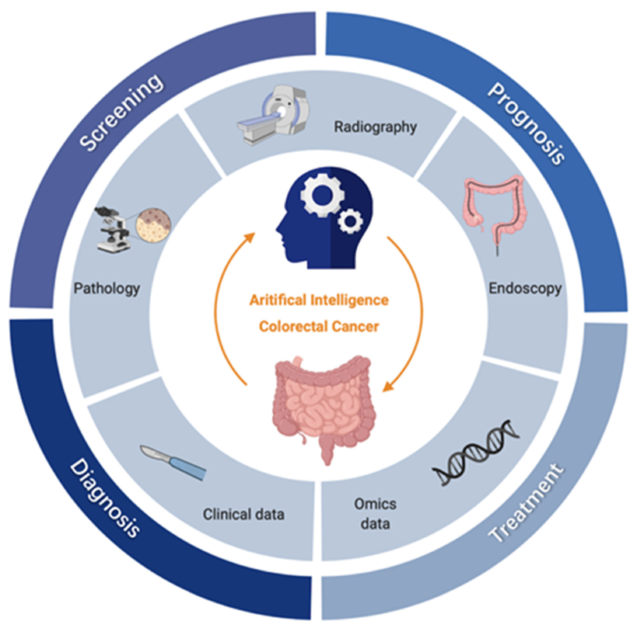The field of medical imaging is undergoing a revolution thanks to artificial intelligence (AI), which makes it possible to diagnose numerous illnesses, including cancer, more precisely and quickly.
Two new domains, radiomics, and radio genomics, use AI to extract and process massive amounts of data from medical images. These fields aim to find imaging biomarkers to help with a cancer diagnosis and treatment planning.
Using graphics processing units (GPUs) in AI-based medical imaging applications has increased during the past several years.
For availing GPU servers with professional-grade NVIDIA Ampere A100 | RTX A6000 | GFORCE RTX 3090 | GEFORCE RTX 1080Ti cards. Linux and Windows VPS are also available at Seimaxim.
GPUs handle the complicated computations necessary in radiomics and radiogenomics for cancer diagnosis and treatment. So, they are specialized hardware devices that run enormous volumes of data in parallel.
GPU-based AI systems are beneficial in analyzing medical images, as they can process large volumes of data quickly and accurately. Researchers can reduce the time required to perform radiomics and radio genomics analyses using GPUs.
It also thereby accelerates the development of new imaging biomarkers and cancer therapies.
Moreover, using GPUs in AI-based medical imaging applications allows for developing more sophisticated algorithms to detect subtle differences in medical images that may not be discernible to the human eye.
It can lead to earlier and more accurate cancer diagnoses and more personalized treatment plans.
Overall, GPU-based AI has the potential to significantly improve cancer diagnosis and treatment by enabling more efficient and accurate analysis of medical images.
As technology advances, GPU-based AI will likely become increasingly prevalent in radiomics and radio genomics. It leads to more effective cancer therapies and improved patient outcomes.
Overview of radiomics and radio genomics

Radiomics and radio genomics rapidly advance healthcare technology, revolutionizing how healthcare practitioners assess and diagnose various illnesses.
Radiomics uses imaging techniques such as Magnetic Resonance Imaging (MRI), Computed Tomography (CT), and other methods to quantify imaging data to create and develop detailed data maps for analysis and comparison.
Meanwhile, radio genomics combines radiological and genomic data, allowing practitioners to detect specific genetic alterations. It can contribute to the severity of a patient’s condition, enabling them to provide more effective treatment options.
Both radiomics and radio genomics present an opportunity to advance the accuracy of diagnoses significantly and reduce the burden of health care on society, providing valuable and rapid insight into diseases and patient health.
Challenges of analyzing medical images with traditional computing methods
Analyzing medical images for radiomics and radio genomics is a complex task requiring significant data processing. Traditionally, this has been done using central processing units (CPUs), the standard computer processing units.
However, analyzing medical images using traditional computing methods is challenging.
One major challenge is the sheer volume of data that needs to be processed. Medical images can be huge, and analyzing them requires processing thousands or even millions of pixels.
CPUs can only process one operation simultaneously, slowing processing speeds for large datasets.
Another challenge is the complexity of the algorithms used in radiomics and radio genomics analyses. These algorithms require complex mathematical operations, such as convolution, filtering, and feature extraction.
The size and resolution of medical images are constantly increasing, and traditional computing methods may need help to keep up with the demand for more accurate and detailed analyses.
CPUs need to be optimized for these types of operations, which can further slow down the study. Moreover, traditional computing methods may not be able to handle the increasing demand for high-quality medical imaging data.
GPUs can perform several mathematical operations simultaneously, making them ideal for the parallel processing required for analyzing large medical image datasets.
GPUs can perform many mathematical operations simultaneously, allowing for much faster processing of large datasets. It can significantly reduce the time required for radiomics and radio genomics analyses, enabling more efficient and accurate cancer diagnosis and treatment planning.
GPU-based Artificial Intelligence in Medical Imaging

Artificial intelligence (AI) is transforming the field of medical imaging, and graphics processing units (GPUs) have become essential tools in AI-based medical imaging applications. Here are some ways that GPUs uses in AI-based medical imaging:
Parallel Processing
GPUs are well-suited for parallel processing, essential for the complex computations required in radiomics and radio genomics analyses.
GPUs can perform many mathematical operations simultaneously, significantly reducing the time required for processing large volumes of medical image data.
Radiomics and Radiogenomics are the fields that use medical imaging data to diagnose and treat cancer. These fields require the analysis of large datasets that can contain terabytes of image data.
GPUs are highly effective in performing the necessary computations in these fields, which include feature extraction, feature selection, and classification.
GPUs can execute thousands of threads in parallel, making them highly efficient for parallel computing. Compared to CPUs, GPUs can perform complex computations much faster, leading to faster analysis times, reduced wait times, and improved efficiency.
Scientist uses Artificial neural networks to learn from data and use this knowledge to make predictions. GPUs are ideal for training neural networks, as they can perform the complex mathematical calculations required for training much faster than CPUs.
It makes them suitable for image classification, segmentation, and detection tasks. Medical image data can be extensive, and processing it can be time-consuming.
GPUs can easily handle large volumes of data, making them highly effective for the parallel processing of medical image data.
It enables researchers to process medical image data more quickly and accurately, leading to more precise diagnosis and treatment planning.
Deep Learning
Deep learning is a subset of AI that includes training neural networks to identify patterns in data.
GPUs are essential for deep learning, as they can perform the complex mathematical calculations required for training neural networks much faster than CPUs.
Scientists use GPUs particularly well-suited for deep learning tasks involving convolutional neural networks and recurrent neural networks, commonly used in medical imaging analysis.
We use CNNs for image recognition and classification, while RNNs for analyzing time-series data. Both tasks require significant computational resources, and GPUs are ideal for this type of processing.
In addition to their ability to handle complex computations, GPUs also have large amounts of memory, which is essential for training deep neural networks.
GPUs can store large datasets in memory, which makes them faster and more efficient than CPUs when processing large datasets.
Image Segmentation
Image segmentation is dividing an image into multiple regions or segments. It is a critical step in medical image analysis, allowing researchers to identify specific areas of interest in the image.
GPUs are particularly well-suited for image segmentation. They can perform multiple operations simultaneously and handle large volumes of data.
Detection and Classification
AI-based medical imaging applications often involve detecting and classifying abnormalities in medical images. GPUs can significantly speed up the detection and classification process by enabling faster processing of large datasets.
Overall, GPUs are a critical component of AI-based medical imaging applications, enabling faster processing, better accuracy, and more sophisticated analysis of medical image data.
As the technology advances, GPU-based AI will likely become increasingly important in radiomics and radio genomics, leading to more efficient cancer diagnosis and treatment planning.
GPU’s benefits in radiomics
There are various benefits to using GPUs for radiomics and radio genomics investigations. First, GPU technology enables quicker, more effective data analysis than CPUs.
It speeds up data processing and accelerates the research of radiomics and radiogenomics.
Second, huge radiomics and radiogenomics datasets require a lot of onboard memory, which GPUs have in abundance. It guarantees that data can be saved for processing and analysis in the future.
Cancer diagnosis and treatment is a field that has seen massive strides due to AI-based technology in recent years.
Examples of GPU-based AI systems for cancer diagnosis and treatment

Graphics Processing Unit (GPU) is a powerful computing engine that accelerates AI tasks.
With GPU-based systems, machines can use their computing power to detect signs of cancer from medical images, such as MRI scans.
For example, one approach to cancer diagnosis and treatment is AI-based computer vision. The system will analyze the image, extract features and distinguish different patterns indicative of cancerous lesions.
It is beneficial in the early detection and detection of low-density tumors that might otherwise go unnoticed.
AI-powered computer-assisted detection (CAD) is another approach used to diagnose cancer.
It leverages advanced algorithms powered by GPU to accurately and quickly identify and label abnormalities in medical images.
The AI system can be trained to detect cancer cells, diagnose specific types of cancers, or guide radiation treatments.
For this purpose, we are using computer vision to compare medical images of normal and abnormal regions.
The precision and speed of GPUs also enable researchers to apply machine learning to cancer diagnosis, giving them the power to predict prognosis accurately.
Using GPU-based systems, we can create models that consider factors such as lifestyle habits, tumor markers, and genetic mutations to determine patient prognosis with increased accuracy.
Lastly, the advancements in GPU-based systems have also made the development of personalized treatments more attainable.
Medical teams can use these AI-based systems to develop highly individualized therapies based on each patient’s unique disease history and health status.
By considering each individual’s cancer, lifestyle, and overall health, personalized treatments can be created to fight cancer best. It also gives the patient the best chance of successful recovery.
These AI-based solutions make it easier to identify, diagnose, and treat cancer than ever before, thanks to the power of GPU.
The use of AI systems powered by GPUs in cancer diagnosis and treatment will undoubtedly revolutionize the field, allowing healthcare providers to treat and diagnose more accurately in a shorter amount of time and ultimately improve patient outcomes.
The potential impact of GPU-based AI on cancer treatment
As the field of artificial intelligence constantly evolves, a new technology is making waves: GPU-based AI. By Utilizing GPUs, AI applications can process large amounts of data faster and more efficiently than ever.
One application of this technology, particularly relevant to the healthcare industry, is its potential to help diagnose and treat cancer.
By incorporating GPU-based AI into the diagnostic process, doctors can quickly analyze massive amounts of data and conclude the health of their patients.
In addition, the data analysis can provide valuable insights into the progress of a patient’s treatment plan, such as when the next chemotherapy session should take place.
People have used GPU-based AI technology to build complex neural networks that can learn how to identify tumors and diagnose cancer with accuracy.
Such deep learning algorithms can also detect changes in cancer cells over time, allowing doctors to more accurately determine whether a tumor will become aggressive and require a change in treatment.
Finally, GPU-based AI can personalize cancer treatments by utilizing predictive algorithms that suggest specific therapies based on individual patient characteristics and their diagnosis.
It is of particular benefit to doctors who must decide how to treat the many types of cancer that affect patients today.
Current limitations for GPU-based AI in radiomics and radiogenomics
Computing Power and Cost
GPU-based AI in radiomics and radiogenomics is still a relatively new technology, and current implementations are expensive and often limited by their computing power.
As a result, larger datasets, more complex models, and higher-quality results require significant processing time, and higher-end GPUs come with hefty price tags.
Investing in GPU-based AI technology can be cost-prohibitive for smaller and medium-sized organizations.
Automation
Many GPU-based AI systems lack automation. Simple tasks, such as preprocessing datasets or scheduling training and inference, also come under this criteria.
It requires manual labor and resources. As AI systems become more complex, this task can be difficult and time-consuming, hindering the development and implementation of new applications.
Data Processing and Preprocessing
The preprocessing of data for use with GPU-based AI is still a difficult and time-consuming task. Although preprocessing techniques have advanced, there still needs to be a large gap between data acquisition and model implementation.
This lack of preprocessing automation means data preparation can become a significant bottleneck for AI implementation.
Hardware Compatibility
Due to their powerful processing capabilities, some GPU-based AI systems require hardware components that may be compatible with older hardware platforms.
Additionally, many GPU-based AI models require access to external hardware components. These include dedicated processors, additional memory, and high-speed internet connections, making the transition to new systems costly.
Security
With the rise of AI, data security and privacy have become increasingly important. As GPU-based AI systems rely heavily on large datasets,
the data they store and utilize may become susceptible to unauthorized access and malicious attacks.
Therefore, it is necessary to ensure proper security protocols and measures are in place to protect sensitive data and avoid malicious activities.
Future perspective
Preprocessing is essential for ensuring data quality, reducing noise, and optimizing GPU computation speeds. Efficient data preprocessing techniques must utilize to improve the accuracy of AI-driven radiomics and radiogenomics
Standard methods include removing artifacts from the images, enhancing signal-to-noise ratio, denoising, image sharpening, and image segmentation. GPU-based algorithms can easily integrate all of these techniques.
Improving AI Model Performance
After preprocessing the data, we can apply AI models to detect changes in medical images. It can be used to aid in diagnosis, monitoring, and treatment.
We should employ more sophisticated and data-driven approaches, such as deep learning to improve AI performance further.
Deep learning techniques can leverage structured and unstructured data, such as radiographic scans and associated reports.
With enough data, AI can make predictions and identify patterns in the data with higher accuracy.
Integrating AI Into Clinical Workflows
We should explore the integration of AI into existing clinical workflows as it has already begun to play an essential role in medical imaging.
For instance, AI-based algorithms can detect lesions and other anomalies in medical images and make decisions regarding diagnosis, treatment, and prognosis.
Integrating AI into clinical workflows allows healthcare providers to identify diseases more quickly and accurately. They can also track the progression of treatments and better understand disease processes.
With advances in computing power and machine learning algorithms, AI-based cancer diagnosis and treatment tools are becoming more powerful and accessible.
Interdisciplinary Collaboration for Optimal AI Performance
Developing GPU-based systems for cancer diagnosis and treatment is an interdisciplinary undertaking. It involves scientists, engineers, computer scientists, physicians, and other healthcare professionals.
These groups can pool their knowledge and expertise by working together to develop effective and efficient GPU-based systems.
Incorporating ideas from multiple perspectives into the system design enables more creative problem-solving.
Interdisciplinary collaboration is essential for developing effective GPU-based cancer diagnosis and treatment strategies.
By bringing together scientists, engineers, computer scientists, physicians, and other healthcare professionals, researchers can leverage the combined expertise of multiple disciplines to maximize the potential of these systems.
AI-Enabled Precision Medicine
GPU-based AI systems can analyze large amounts of medical data to provide insights into individual patients and provide precision medicine. It enables personalized care, early detection, and better management of cancer.
Scientists use AI-based models to analyze medical imaging data such as x-rays, CT scans, MRI scans, and gene expression data to detect early signs of cancer.
AI technology can also help identify potential targets for drug treatments. It helps in determining which patients will likely benefit from specific therapies.
The Role of Big Data in AI for Cancer
Big data is an essential component of AI technology, and interdisciplinary collaboration is necessary for its effective utilization.
Large datasets must be collected, sorted, and labeled to develop and validate AI models for cancer diagnosis and treatment. Medical professionals, engineers, and computer scientists must work together to design methods to collect, store, analyze, and interpret these data.
In addition, computer scientists can create powerful algorithms to extract valuable insights from the data that can inform and guide cancer diagnosis and treatment.
Conclusion
In conclusion, the article highlights the significant role of GPU-based artificial intelligence (AI) in radiomics and radiogenomics for cancer diagnosis and treatment.
Radiomics and radiogenomics are dynamic fields. It requires vast data processing, image analysis, and pattern recognition, which can be efficiently achieved using GPU-based AI algorithms.
GPU-based AI can perform various tasks such as image segmentation, feature extraction, and classification faster. Therefore, it is crucial for accurate cancer diagnosis and treatment planning.
The article emphasizes the potential of radiomics and radiogenomics in personalized cancer treatment, where AI-based analysis can help customize treatment plans based on individual patient characteristics.
However, the article also acknowledges the limitations of GPU-based AI in radiomics and radio genomics. It includes the need for large datasets for AI algorithm training, potential biases in AI algorithms, and careful validation of results.
In conclusion, GPU-based AI has a promising role in improving cancer diagnosis and treatment through radiomics and radio genomics. Further research and development are needed to ensure the reliability of AI-based approaches in these fields.